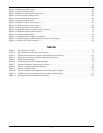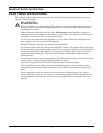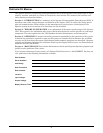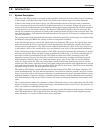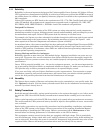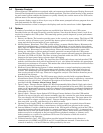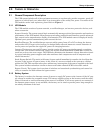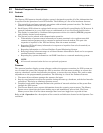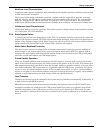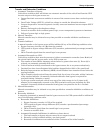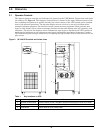
Introduction
7
1.4 Operator Controls
Liebert Npower UPS modules are equipped with a microprocessor-based Operator Display Screen and
Control Panel designed for convenient and reliable operation. The front panel location of the monitor-
ing and control system enables the Operator to quickly identify the current status of the UPS and to
perform most of the manual operations.
The operator display screen is driven by an easy-to-follow menu-prompted software program that con-
trols and monitors the UPS system.
Detailed instructions on how to interpret the displays and use the controls are in 3.0 - Operation.
1.5 Options
A number of standard pre-designed options are available from Liebert for your UPS system.
Described below are the most frequently provided options. Note that the battery items (1 and 2) are
required to complete the UPS system. The remaining options provide improved system performance
or convenience.
1. Battery and Racks. The batteries provide power in the event of a power outage. The Liebert UPS
can use a variety of battery types, provided the battery plant is designed for the UPS DC voltage
range and the load requirements of your application.
2. Module Battery Disconnect. The UPS system utilizes a separate Module Battery Disconnect for
remotely located batteries. A sensing circuit in the UPS module, set at the battery low voltage
limit, trips the Module Battery Disconnect to safeguard the battery from excessive discharge. The
Module Battery Disconnect has an undervoltage release mechanism designed to ensure that
during any shutdown or failure mode all battery potential is removed from the UPS system.
3. Input Distortion Filter (Trap). This filter reduces input current reflected harmonic distortion to
less than 10% THD at full load. The filter is factory installed within the UPS. This filter also
improves the input power factor to better than 0.95 lagging.
4. Load Bus Synchronization (LBS). The Load Bus Sync (LBS) option keeps two independent UPS
modules (and therefore their critical load buses) in sync, even when the modules are operating on
batteries or asynchronous AC sources. This means that critical loads connected to both load buses
can switch seamlessly between the two.
5. SiteScan Central Monitoring System. Liebert manufactures a central monitoring system that
automatically displays key UPS measurements and alarms, as well as data from a variety of
sensors. This monitoring system signals alarms so corrective action can be taken. Events and
data can be printed in hard copy. Data can be logged for analysis. The SiteScan Interface port is
standard for the Npower.
6. Remote Alarm Status Panel. The UPS system may also be provided with an optional Remote
Alarm Status Panel. This Panel provides eight LED indicators and may be placed at a convenient
location near the critical load. A functional description of the Remote Alarm Status Panel is
provided in 3.5.3 - Remote Alarm Status Panel.
7. Open Comms - Discrete Output Option OC-DO (Programmable Relay Board). Each option has 8
channels. Up to two Programmable Relay options can be installed in the same UPS. Any alarm/
event can be programmed onto any channel or channels. Programming is performed through the
LCD display. Each relay channel has two sets of Form-C dry contacts rated 1 Amp @ 30 VDC or
250 mAmp @ 125 VAC.
8. Open Comms - Discrete Input Option OC-DI (Input Contact Isolator). Provides UPS module
interface for up to eight user relay inputs (normally open dry contacts) for user alarm messages.
The user through the LCD display can program the UPS alarm messages. The input alarm can
also be installed to trigger an Open Comms - Discrete Output Option channel. Each alarm can
have auto-dial, event log, and time delay (0 to 999.9 seconds).
9. Optional Power Supply (OPS). An additional control power supply is required when a Remote
Alarm Status Panel and/or three or more battery circuit breakers are present in the system.
10. Internal Modem. Provides a 2400-baud modem in the UPS capable of dialing out from the UPS or
accepting incoming calls and connecting to a remote terminal, computer or PC. A command set
allows the user to view the alarm status, event log status, history status and system settings. The
modem can also be configured to dial out two different telephone numbers, a primary and a
backup number as a result of a significant UPS event. The selection of dial-out events is
programmable by the Operator.
11. Network Interface Card - NIC. This option provides internal hardware and software to
communicate (via SNMP and HTTP) to any I.P.-based Ethernet network. Connection to the
network is made by a 10 baseT Ethernet cable provided by the user.



